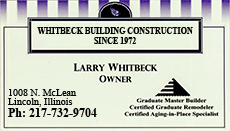 Fortunately, there is a growing trend in interior design that
is easy to understand, relatable and applicable in almost every home
-- a trend called "techorating." Fortunately, there is a growing trend in interior design that
is easy to understand, relatable and applicable in almost every home
-- a trend called "techorating."
"'Techorating' is the blending of technology into the overall
design of a room to create functional, stylish and unique
environments that work well and look great," says Janna Robinson,
technology and design expert. "This design trend grows from the
integral role technology now plays in our lives and the majority of
American homes."
Robinson offers some helpful tips for incorporating the
techorating trend into your home:
Techorating with TV
"Televisions can now serve many functions in our homes, from
making a design statement with a sleek flat screen, to providing a
focal point for gatherings of family and friends, to even serving as
a hub of information, thanks to Smart TV platforms and increased
connectivity," Robinson says. "Techorating principles take into
account the central role a TV plays in the living room, family room
or bedroom."

Start by considering the aesthetics of the TV itself. Flat
screens are popular not only for the superior viewing experience
they provide, but also for their visual appeal. Manufacturers have
taken TV aesthetics to the next level, offering ultra-slim models.
LG has gone even further with its Cinema Screen design, which is a
nearly frameless TV that provides a streamlined, modern look.
Next, because more Americans are entertaining at home, it is
important to maximize the viewing experience for the maximum number
of viewers. With some TVs, viewing angle can be an issue. Robinson
recommends arranging seating so that everyone has a good view of the
screen, while still allowing traffic to flow freely around seats.
Sectionals and modular sectionals provide flexible seating
configurations. For smaller spaces, beanbags, decorative poufs and
floor pillows can provide extra seating without overpowering the
space.
Look for TVs that are designed to maximize viewing angles.
Next-generation 3-D TVs like the Cinema 3D models from LG provide a
wide range of viewing angles in 2-D and 3-D, so content display
remains crisp and accurate, even for off-angle viewing.
[to top of second column] |
 Creating the perfect background
Techorating techniques use color and design to create a
comfortable, functional background for technology. For example,
painting the wall behind your TV a darker color (like chocolate
brown) not only helps with distracting glares, but it also gives the
illusion of depth to the space.
Similarly, dressing up bare walls, floors and wooden furniture
with varying texture and fabrics such as area rugs and curtains can
help absorb sound and improve the listening quality in a room. Don't
overdo it, though; too much carpeting and heavy curtains can make
sound seem muffled. Instead, add some bookshelves or hang art on
walls to create reflective surfaces that will help break up sound
waves. A mixture of surfaces and materials will provide the best
sound quality.
Keep in mind, Robinson says, that you don't have to completely
redecorate your room to achieve techorating harmony.
"I'm a big fan of repurposing and melding old with new," she
says. "If your couch has a solid frame, update it by reupholstering
it, or try a new decorative pillow cover. If you have existing
furniture that needs a little sprucing up, paint or stain it for a
fresh, new look."

For more information on techorating, visit
lgmakeover.com.
[Text from ARAcontent]
Visit the
2012 Spring Home & Garden Magazine for these great articles:
-
A fresh coat of paint
-
Marrying technology
and decorating
-
Lighting your
interior
-
Creating a cool
breeze
-
Weekend warrior takes
on the bath
-
Manicuring the lawn
-
Happy trees
-
New outdoor blooms
and foliage
-
Attracting
butterflies to your yard
|